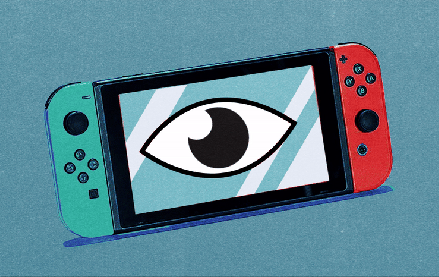Media Buying Briefing: How buyers see Q4 scatter activity affecting 2022 spending across TV and digital

This Media Buying Briefing covers the latest in agency news and media buying for Digiday+ members and is distributed over email every Monday at 10 a.m. ET. More from the series →
Although the fourth-quarter national ad marketplace has shown some softness due to both media-related and external factors, for the most part there’s enough momentum from advertisers wanting to spend the last of their 2021 ad budgets to enter next year with some momentum. Whether that momentum can be sustained throughout 2022 remains to be seen.
A check-in with a handful of heads of investment at major media agencies reveals that some big clients who purchased upfront inventory at steep increases in cost-per-thousand viewers (CPM), have exercised their “options” to return some of that inventory to the networks they bought it from. That’s dropping the rates for Q4 scatter inventory, although they are said to remain above upfront pricing.
“As much as we’d like to think the pandemic has ended, there’s still pressures from the pandemic that exists on certain entities,” said Geoff Calabrese, chief investment officer for Omnicom Media Group.
Cara Lewis, executive vp and head of U.S. investment for Dentsu, said she hasn’t seen a significant pullback in spending among her clients, but “some had to [exercise options] for business purposes. In terms of scatter, some brands need to buy and pick off some individual inventory as needed, but I haven’t seen a flooding of the marketplace — I’ve heard it’s pretty soft.”
Specifically, some automakers are said to have returned TV inventory, as a result of lingering chip shortages that’s inhibiting the production of new cars. Pharmaceutical advertisers, a mainstay of linear TV advertisers, are also said to have pulled back a bit due to the increase in Telehealth appointments consumers are making. And movie studios, while spending more than they did in 2020 (when theaters were closed for the most part), are still holding back some spend since box-office results haven’t recovered as much as they would like.
Within linear TV, the last remaining source of strength remains in live sports, whose ratings have generally bounced back following serious dips in tentpole sports events at the height of the pandemic. “We have seen live sports continue to be extremely popular,” said Calabrese. “Advertisers are still interested in big events such as the Super Bowl and the Olympics. The rest of spend flattens out a bit when you have such dominant programming.”
Surprisingly, the rest of linear TV viewing hasn’t dropped off as precipitously as it has in recent quarters, said Dave Campanelli, executive vp and chief investment officer at Horizon Media. “The linear networks aren’t in as dire a situation” as they were in 2020 or even before. Yes, ratings are down across the board, he added, but the networks were more accurate in guessing the drop-off. “This quarter it’s different than in recent years when they were too optimistic in their estimates,” said Campanelli.
Still, the rest of the video environment, from connected TV and streaming to digital out-of-home video to even user-generated content, appears to be benefiting the most from any advertiser pullback on linear TV, whose audience continues to erode. “The shift to digital has accelerated, and there’s just not really any appointment viewing anymore,” noted Lewis.
“We’re getting bought out of broadcast upfront commitments, out of scatter video money, out of digital dollars,” said Sean McCaffrey, CEO of GSTV, a video network in service stations across the country. “I have zero ego about how we’re budgeted or what we’re called. We’re just trying to build solutions for partners.”
“We’re seeing a lot of dollars move to user-generated content through connected TV,” said Calabrese. “We’re seeing it go into social and influencer spend, and from [broad-reaching] influencers to minority influencers , which is a huge initiative for us.”
How will these factors translate to marketplace momentum — or lack thereof — going into 2022? For one, Horizon’s Campanelli said he hears a lot from clients about supply-chain problems possibly affecting their spend next year, but “I don’t foresee any meaningful impact,” whereas concerns over inflation are more credible, but “it’s too early to tell what impact that might have.”
“It’s going to be a strong marketplace, we just don’t know the true supply [of inventory] just yet,” said Dentsu’s Lewis. “Now that we’re seeing a softer fourth-quarter marketplace, we’ll see how well we predicted the ratings for next year.”
Color by numbers
According to the latest stats issued by ECI Media Management, North American media prices are expected to rise 3.8 percent in 2021, which is higher than the 2.9 percent predicted at the beginning of the year.
- ECI also bumped up its estimates for global media inflation in 2021 to 4 percent, from 3 percent predicted earlier this year.
- Finally, ECI estimates that for 2022, global offline media prices will rise 3.4 percent, while online media will rise 3.3 percent.
Takeoff & landing
- Ad management firm Mediavine, which partnered with minority-owned Colossus SSP in July to increase investments in minority-owned content through the programmatic sale of inventory in those channels, said Colossus SSP now ranks in the top 10 monetization platforms and is the highest performing partner of Mediavine’s in the last 18 months.
- Female owned-and-run independent shop Media Matters Worldwide was named media AOR for Glassdoor, handling the jobs and companies app’s omnichannel strategy, communications planning, analytics and data visualization, effective immediately.
- A few key industry executives are retiring: Jane Clarke, longtime head of the Coalition for Innovative Media Measurement, is stepping down and being replaced by Jon Watts, the co-founder and executive director of the Project X Institute. And ANA’s main man in Washington, DC, group executive vp Dan Jaffe, is retiring, to be replaced by senior vp Christopher Oswald.
Direct quote
“There is so much existential dread as well as opportunity right now around where to find video impressions and reach and scale. If you’re coming from a linear lens, [you’re thinking about] where to find targeting and measurable audiences. And if you’re coming from a digital background (whether it’s CTV, or digital out of home or online video), a lot of the debate is around how do I buy it and the challenges with buying it? Versus probably the more important question: why am I buying it?” We keep hearing back at us, ‘I still care about right place, right time, right moment, right context.’ But what’s the mindset of the consumer and can I get across to it?”
—Sean McCaffrey, CEO of out-of-home video network GSTV, talking about shifting attitudes toward video among media buyers.
Speed reading
- Digiday senior news editor Seb Joseph dives deeply into the vagaries of the fourth-quarter digital ad marketplace, and the effect supply-chain issues are having on it.
- I took a look at the rise of consultancies entering the U.S. market from overseas, as U.S. based agency networks work to expand their international reach.
- Digiday marketing reporter Kimeko McCoy explains how Tik Tok is attracting all manner of unconventional brands to its platform, some of them using it organically and others paying their way to reach Tik Tok’s avid user base.
More in Media

Digiday+ Research: Subscriptions and events gain steam among publishers’ most significant sources of revenue
Direct-sold ads continue to be the dominant source of publishers’ revenue as we move out of the first quarter. But other revenue sources are gaining in importance, particularly subscriptions and events.

Media Briefing: Apple News ad monetization still ‘abysmal’ for some
Publishers still can’t make meaningful ad revenue from Apple News despite its push to sell more ad inventory.

Andre ‘Typical Gamer’ Rebelo hits 1 million followers on Fortnite
As Epic Games looks to establish Fortnite as an alternative to platforms such as Roblox for metaverse-interested brands, seeing an individual creator reach one million followers could help convince more marketers to turn their attention to Fortnite Creative.





